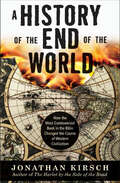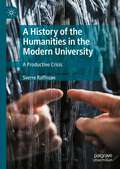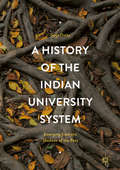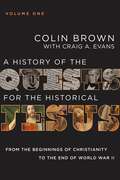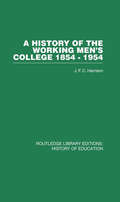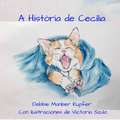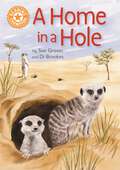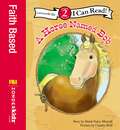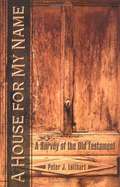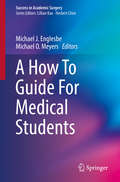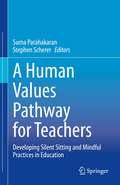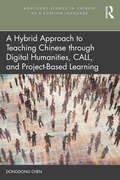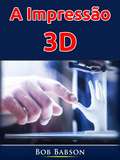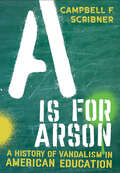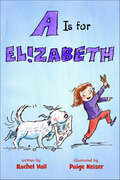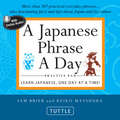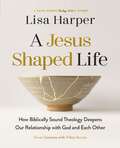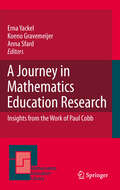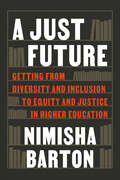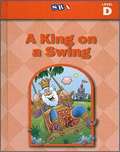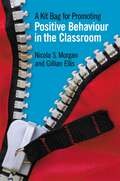- Table View
- List View
A History of the End of the World: How the Most Controversial Book in the Bible Changed the Course of Western Civilization
by Jonathan Kirsch"[The Book of] Revelation has served as a "language arsenal" in a great many of the social, cultural, and political conflicts in Western history. Again and again, Revelation has stirred some dangerous men and women to act out their own private apocalypses. Above all, the moral calculus of Revelation—the demonization of one's enemies, the sanctification of revenge taking, and the notion that history must end in catastrophe—can be detected in some of the worst atrocities and excesses of every age, including our own. For all of these reasons, the rest of us ignore the book of Revelation only at our impoverishment and, more to the point, at our own peril."The mysterious author of the Book of Revelation (or the Apocalypse, as the last book of the New Testament is also known) never considered that his sermon on the impending end times would last beyond his own life. In fact, he predicted that the destruction of the earth would be witnessed by his contemporaries. Yet Revelation not only outlived its creator; this vivid and violent revenge fantasy has played a significant role in the march of Western civilization. Ever since Revelation was first preached as the revealed word of Jesus Christ, it has haunted and inspired hearers and readers alike. The mark of the beast, the Antichrist, 666, the Whore of Babylon, Armageddon, and the Four Horsemen of the Apocalypse are just a few of the images, phrases, and codes that have burned their way into the fabric of our culture. The questions raised go straight to the heart of the human fear of death and obsession with the afterlife. Will we, individually or collectively, ride off to glory, or will we drown in hellfire for all eternity? As those who best manipulate this dark vision learned, which side we fall on is often a matter of life or death. Honed into a weapon in the ongoing culture wars between states, religions, and citizenry, Revelation has significantly altered the course of history. Kirsch, whom the Washington Post calls "a fine storyteller with a flair for rendering ancient tales relevant and appealing to modern audiences," delivers a far-ranging, entertaining, and shocking history of this scandalous book, which was nearly cut from the New Testament. From the fall of the Roman Empire to the Black Death, the Inquisition to the Protestant Reformation, the New World to the rise of the Religious Right, this chronicle of the use and abuse of the Book of Revelation tells the tale of the unfolding of history and the hopes, fears, dreams, and nightmares of all humanity.
A History of the Humanities in the Modern University: A Productive Crisis
by Sverre RaffnsøeThis book challenges commonplace assertions that the humanities are presently undergoing a severe crisis as a result of a longstanding decline. Rather than hearkening to the widespread, reactive call for a last-ditch defense of the humanities under attack from an ungracious world, this book fundamentally reverses the perspective and makes a plea for a different, affirmative approach. It contends that the humanities have incessantly arrived at critical turning points since they were first constituted in a form that remains recognizable today and assumed a leading role in knowledge organization with the establishment of the modern university around 1800. Assuming a historical perspective, the monograph takes the human sciences back to their rightful place in the family tree of sciences and gives due recognition to their continuously decisive role in the production of new knowledge and the creation of new fields of knowledge. Situating the ongoing gemmation of the humanities in a broader context, this monograph also offers an encompassing introduction to the over-all development of knowledge in the last two hundred years.
A History of the Indian University System: Emerging from the Shadows of the Past
by Surja DattaThis book provides an explanation of the nature of the Indian university system, including its specificities and its peculiarities as well as exploring how they developed. It offers a historical and institutional perspective by singling out the forces that have shaped the present Indian higher education system. Bridging the pre-independence and the post-independence eras, the book illustrates the continuities as well as the differences between the two epochs. It makes a compelling case for the idea that history matters, and an understanding of India's history is crucial to understanding the present day Indian university scene. Using multiple paradigmatic case studies, based on the University of Calcutta, the Indian Institute of Science, and the Indian Statistical Institute, the book highlights the dominant ideologies and interests that have shaped the university system since its inception in 1857. It will be of great importance to students and scholars of history and education, particularly those with an interest in the history of India and its education system.
A History of the Quests for the Historical Jesus, Volume 1: From the Beginnings of Christianity to the End of World War II
by Colin Brown Craig A. EvansA comprehensive, two-volume reassessment of the quests for the historical Jesus that details their origins and underlying presuppositions as well as their ongoing influence on today's biblical and theological scholarship.Jesus' life and teaching is important to every question we ask about what we believe and why we believe it. And yet there has never been common agreement about his identity, intentions, or teachings—even among first-century historians and scholars. Throughout history, different religious and philosophical traditions have attempted to claim Jesus and paint him in the cultural narratives of their heritage, creating a labyrinth of conflicting ideas.From the evolution of orthodoxy and quests before Albert Schweitzer's famous "Old Quest," to today's ongoing questions about criteria, methods, and sources, A History of the Quests for the Historical Jesus not only chronicles the developments but lays the groundwork for the way forward.The late Colin Brown brings his scholarly prowess in both theology and biblical studies to bear on the subject, assessing not only the historical and exegetical nuts and bolts of the debate about Jesus of Nazareth but also its philosophical, sociological, and theological underpinnings. Instead of seeking a bedrock of "facts," Brown stresses the role of hermeneutics in formulating questions and seeking answers.Colin Brown was almost finished with the manuscript at the time of his passing in 2019. Brought to its final form by Craig A. Evans, this book promises to become the definitive history and assessment of the quests for the historical Jesus.Volume One covers the period from the beginnings of Christianity to the end of World War II.Volume Two (sold separately) covers the period from the post-War era through contemporary debates.
A History of the Quests for the Historical Jesus, Volume 2: From the Post-War Era through Contemporary Debates
by Colin Brown Craig A. EvansA comprehensive, two-volume reassessment of the quests for the historical Jesus that details their origins and underlying presuppositions as well as their ongoing influence on today's biblical and theological scholarship.Jesus' life and teaching is important to every question we ask about what we believe and why we believe it. And yet there has never been common agreement about his identity, intentions, or teachings—even among first-century historians and scholars. Throughout history, different religious and philosophical traditions have attempted to claim Jesus and paint him in the cultural narratives of their heritage, creating a labyrinth of conflicting ideas.From the evolution of orthodoxy and quests before Albert Schweitzer's famous "Old Quest," to today's ongoing questions about criteria, methods, and sources, A History of the Quests for the Historical Jesus not only chronicles the developments but lays the groundwork for the way forward.The late Colin Brown brings his scholarly prowess in both theology and biblical studies to bear on the subject, assessing not only the historical and exegetical nuts and bolts of the debate about Jesus of Nazareth but also its philosophical, sociological, and theological underpinnings. Instead of seeking a bedrock of "facts," Brown stresses the role of hermeneutics in formulating questions and seeking answers.Colin Brown was almost finished with the manuscript at the time of his passing in 2019. Brought to its final form by Craig A. Evans, this book promises to become the definitive history and assessment of the quests for the historical Jesus.Volume One (sold separately) covers the period from the beginnings of Christianity to the end of World War II.Volume Two covers the period from the post-War era through contemporary debates.
A History of the Rutgers University Glee Club
by David F. ChapmanFounded in 1872, the Glee Club is Rutgers University’s oldest continuously active student organization, as well as one of the first glee clubs in the United States. For the past 150 years, it has represented the university and presented an image of the Rutgers man on a national and international stage. This volume offers a comprehensive history of the Rutgers Glee Club, from its origins adopting traditions from the German Männerchor and British singing clubs to its current manifestation as a world-recognized ensemble. Along the way, we meet the colorful and charismatic men who have directed the group over the years, from the popular composer and minstrel performer Loren Bragdon to the classically-trained conductor Patrick Gardner. And of course, we learn what the club has meant to the generations of talented and dedicated young men who have sung in it. A History of the Rutgers University Glee Club recounts the origins of the group’s most beloved traditions, including the composition of the alma mater’s anthem “On the Banks of the Old Raritan” and the development of the annual Christmas in Carol and Song concerts. Meticulously researched, including a complete discography of the club’s recordings, this book is a must-have for all the Rutgers Glee Club’s many fans and alumni.
A History of the University in Europe
This is the final volume in a four-part series covering the development of the university in Europe (east and west) from its origins to the present day, focusing on a number of major themes viewed from a European perspective. The originality of the series lies in its comparative, interdisciplinary, collaborative and transnational nature. It deals also with the content of what was taught at the universities, but its main purpose is an appreciation of the role and structures of the universities as seen against a backdrop of changing conditions, ideas and values. This volume deals with the reconstruction and epoch-making expansion of higher education after 1945, which led to the triumph of modern science. It traces the development of the relationship between universities and national states, teachers and students, their ambitions and political activities. Special attention is paid to fundamental changes in the content of teaching at the universities.
A History of the Working Men's College: 1854-1954
by J F HarrisonOriginally published in 1954, this is the first full-length account of the history of the Working Men’s College in St.Pancras, London. One hundred and fifty years on from its foundation in 1854, it is the oldest adult educational institute in the country. Self-governing and self-financing, it is a rich part of London’s social history. The college stands out as a distinctive monument of the voluntary social service founded by the Victorians, unchanged in all its essentials yet adapting itself to the demands of each generation of students and finding voluntary and unpaid teachers to continue its tradition.
A History of the Yale Law School: The Tercentennial Lectures
by Anthony T. KronmanA fascinating examination of the history of the Yale Law School and its impact on the development of legal education in the U. S. The entity that became the Yale Law School started life early in the nineteenth century as a proprietary school, operated as a sideline by a couple of New Haven lawyers. The New Haven school affiliated with Yale in the 1820s, but it remained so frail that in 1845 and again in 1869 the University seriously considered closing it down. From these humble origins, the Yale Law School went on to become the most influential of American law schools. In the later nineteenth century the School instigated the multidisciplinary approach to law that has subsequently won nearly universal acceptance. In the 1930s the Yale Law School became the center of the jurisprudential movement known as legal realism, which has ever since shaped American law. In the second half of the twentieth century Yale brought the study of constitutional and international law to prominence, overcoming the emphasis on private law that had dominated American law schools. By the end of the twentieth century, Yale was widely acknowledged as the nation's leading law school. The essays in this collection trace these notable developments. They originated as a lecture series convened to commemorate the tercentenary of Yale University. A distinguished group of scholars assembled to explore the history of the School from the earliest days down to modern times. This volume preserves the highly readable format of the original lectures, supported with full scholarly citations.
A História de Cecília
by Sueli Astrini Debbie Manber KupferCecília está em busca de um novo humano, mas será que ela o encontrará ? Disseram que eles eram muito difíceis de treinar. Da autora de P.A.W.S. e Esmeralda Grunch and the Red Tulip.
A Home in a Hole: Independent Reading Orange 6 Non-fiction (Reading Champion #1153)
by Sue GravesThis book is part of Reading Champion, a series carefully linked to book bands to encourage independent reading skills, developed with UCL Institute of Education (IOE)A Home in a Hole is a non-fiction text reporting on animal homes in holes. The simple sentence structure offers readers the opportunity for an independent reading experience with the support of the illustrations.Reading Champion offers independent reading books for children to practise and reinforce their developing reading skills.This early non-fiction text is accompanied by engaging artwork and a reading activity. Each book has been carefully graded so that it can be matched to a child's reading ability, encouraging reading for pleasure.
A Horse Named Bob: Level 2 (I Can Read! #Level 2)
by Dandi Daley MackallA Lesson in Kindness. Jen can’t get a horse, so she’s excited when her neighbor Mrs. Gray gets an old retired horse and agrees to let Jen take care of him. But it seems that all of them need help becoming friends.
A House for My Name: A Survey of the Old Testament
by Peter J. LeithartThe best stories subtly weave themes and characters and symbols into a stunning final tapestry. This Old Testament survey, written for family and classroom reading, reveals the rich weave that makes Scripture the Story of stories.
A How To Guide For Medical Students (Success in Academic Surgery)
by Michael J. Englesbe Michael O. MeyersThis book will be a 'how to' guide for medical students interested in pursuing a career in academic surgery. It will discuss personal traits and rationale for going into academic surgery. It will review accomplishments as a medical student that are key components of beginning an academic career and highlight what makes a student competitive for a surgical program. Sections will be devoted to mentorship, research experience and personal experiences that lead to success. The editors will also focus on gender and work-life balance issues that often are perceived as barriers to a career in academic surgery. It will also provide key dates and sample application information for students to use as templates.
A Human Values Pathway for Teachers: Developing Silent Sitting and Mindful Practices in Education
by Suma Parahakaran Stephen SchererThis book combines perspectives from psychology, spiritual education and digital teaching pedagogies in a transnational framework to discuss the Education in Human Values Program (EHV) for child development, with a focus on silent sitting, mindfulness, meditation and story-telling as tools in the classroom. Through positive guidance in the early stages of child development using EHV tools, teachers will be better equipped to handle disciplinary issues in primary and secondary schools. These practices are also useful for the higher education community, as teachers and educators from tertiary institutions may adopt these practices in their teaching and become reflective practitioners. Topics such as teacher morale and school climate and its impact on children are discussed in relation to building resilience, reflective capacities, and inner strength (shared values) using an intrinsic and transformational approach. The discussions also include perspectives from the neurosciences. With contributions from teachers and educators from the US, South Africa, Malaysia, Australia, Hong Kong and Mauritius, this edited volume addresses the challenges, strengths and weaknesses associated with daily teaching practices in primary and secondary schools and higher education institutions. The content is relevant to policymakers and researchers in child development studies, with a particular focus on the impact of silent sitting, mindful practices, and meditation on children’s self-regulation and resilience. The authors collectively espouse that silent sitting techniques can help a child to grow and discover their hidden potential, thus enhancing their social, emotional, spiritual and physical capacities.
A Hybrid Approach to Teaching Chinese through Digital Humanities, CALL, and Project-Based Learning (Routledge Studies in Chinese as a Foreign Language)
by Dongdong ChenA Hybrid Approach to Teaching Chinese through Digital Humanities, CALL, and Project-Based Learning presents an exposition of current thinking, research, and best practices in Computer-Assisted Language Learning (CALL), Digital Humanities (DH), and Project-Based Language Learning (PBLL) in the context of teaching Chinese as a foreign language (TCFL).It proposes integrating CALL and DH into PBLL to form a Digital Humanities–Augmented Technology-Enhanced Project-Based Language Learning (DATEPBLL) approach to transform student learning. By combining DH pedagogy and CALL technology with PBLL, the approach takes advantage of their synergies, which enables instructors to help students develop linguistic and cultural competency as well as 21st century skills. Case studies and best practices from experienced Chinese language teachers are presented to demonstrate the value of the DATEPBLL approach. This is the first volume that covers all three fields and makes a strong case for the importance of incorporating CALL, DH, and PBLL for effective language learning.Written for professionals in language education, including educators, curriculum designers and developers, graduate students, publishers, government personnel, and researchers, the book provides theoretical insights and practical applications of CALL, DH, and PBLL.
A Impressão 3D
by Bob BabsonGostaria de comprar uma impressora 3D mas não tem ideia de qual comprar? Gostaria de aprender como começar com as impressoras 3D, com o objetivo de imprimir objetos e designs incríveis? Nesse livro você irá aprender tudo sobre a impressão 3D e como começar. Aprenda: -Como começar -Qual impressora 3D comprar -Características e capacidade das impressoras 3D + MUITO MAIS!
A Is for Arson: A History of Vandalism in American Education (Histories of American Education)
by Campbell F. ScribnerIn A Is for Arson, Campbell F. Scribner sifts through two centuries of debris to uncover the conditions that have prompted school vandalism and to explain why attempts at prevention have inevitably failed. Vandalism costs taxpayers hundreds of millions of dollars every year, as students, parents, and even teachers wreak havoc on school buildings. Why do they do it? Can anything stop them? Who should pay for the damage? Underlying these questions are long-standing tensions between freedom and authority, and between wantonness and reason. Property destruction is not simply a moral failing, to be addressed with harsher punishments, nor can the problem be solved through more restrictive architecture or policing. Scribner argues that education itself is a source of intractable struggle, and that vandalism is often the result of an unruly humanity. To understand schooling in the United States, one must first confront the all-too-human emotions that have led to fires, broken windows, and graffiti.A Is for Arson captures those emotions through new historical evidence and diverse theoretical perspectives, helping readers understand vandalism variously as a form of political conflict, as self-education, and as sheer chaos. By analyzing physical artifacts as well as archival sources, Scribner offers new perspectives on children's misbehavior and adults' reactions and allows readers to see the complexities of education—the built environment of teaching and learning, evolving approaches to youth psychology and student discipline—through the eyes of its often resistant subjects.
A Is for Elizabeth (A Is for Elizabeth #1)
by Rachel VailThe first in a new chapter book series spinning off of the Justin Case books, starring Justin's little sister, Elizabeth.Elizabeth is in second grade. Class 2B! It's great! Friends, recess, homework! Even a big project: Make a poster of your name. Yayyy!Hang on.The name Elizabeth has a bajillion letters in it! The name Anna has only four letters. Plus, Anna's first letter is A, which is also the first letter of Alphabetical Order. But Anna can't always be first! That's not fair! In A is for Elizabeth, Elizabeth makes more than a poster. She also makes some important choices—about fairness, rules, speaking up, and glue.But the most important thing she makes is...a friend!With copious line art by Paige Keiser, this first book in a new series—spun off from Rachel Vail's beloved Justin Case series—is sure to delight fans of Judy Moody, Junie B. Jones, and Clementine.
A Japanese Phrase A Day Practice Pad: Learn Japanese, One Day at a Time!
by Sam Brier Keiko MatsuuraThis page-a-day Japanese language pad teaches a new Japanese phrase each day-useful vocabulary that comes in handy for everyday situations when visiting Japan.<P><P>Although more people are studying the Japanese language than ever before, others are still wary of starting because they believe, "it's too difficult." But A Japanese Phrase A Day will show absolute beginners that Japanese is in many ways much easier than other languages and it will help intermediate Japanese learners review and improve upon their past studies and practice Japanese everyday. Japanese is a fascinating language that uses Chinese characters (kanji) as well as two other alphabets (hiragana and katakana). After a few weeks of gradual progress your ability to read Japanese, write Japanese and speak Japanese will grow tremendously.This calendar like desk companion is divided into monthly topics and builds upon itself, one day at a time. Japanese phrases are kept short, simple and functional. Each of the 365 pages include these four components:The phrase or dialogue in Japanese charactersA transliteration using English letters (romanji), which gives English speakers a guide to pronunciationThe English translationA related note about the phrase, Japan, or Japanese culture to add context.Audio for all of the Japanese Phrase A Day entries is available online. Listening and repeating after the native speakers in the audio files will help you to practice Japanese regularly and polish your spoken Japanese and Japanese listening comprehension. To get started, turn to Day One and begin studying the phrase, its meaning, pronunciation and cultural context. Then tear off the sheet and practice writing it a few times. In a matter of days you'll be on your way to reading and writing Japanese!
A Jesus-Shaped Life Bible Study Guide plus Streaming Video: How Biblically Sound Theology Deepens Our Relationship with God and Each Other (A Back Porch Theology Bible Study)
by Lisa HarperMoving beyond facts to experience the fullness of GodTheology is a conversation about God. One that invites us to experience God in all His fullness rather than just memorizing facts about God. Theology is not some academic subject to only be pursued by professors and seminarians. Theology is the way we connect with our Redeemer. It's how we remember that we're His. And we will never have to be alone.This seven-week Bible study by Lisa Harper, titled A Jesus-Shaped Life, is your invitation to explore the depths of God's character, God's love for you, and how your relationship with Him transforms you. Ultimately, you will experience how biblically sound theology deepens your relationship with God and each other.This study guide includes:In-depth personal Bible study between sessionsIndividual access to seven streaming video teachings from LisaGroup discussion questionsStreaming video access code included. Access code subject to expiration after 12/31/2030. Code may be redeemed only by the recipient of this package. Code may not be transferred or sold separately from this package. Internet connection required. Void where prohibited, taxed, or restricted by law. Additional offer details inside.
A Journey in Mathematics Education Research: Insights from the Work of Paul Cobb (Mathematics Education Library #48)
by Anna Sfard Paul Cobb Erna Yackel Koeno GravemeijerOur objective is to publish a book that lays out the theoretical constructs and research methodologies within mathematics education that have been developed by Paul Cobb and explains the process of their development. We propose to do so by including papers in which Cobb introduced new theoretical perspectives and methodologies into the literature, each preceded by a substantive accompanying introductory paper that explains the motivation/rationale for developing the new perspectives and/or methodologies and the processes through which they were developed, and Cobb's own retrospective comments. In this way the book provides the reader with heretofore unpublished material that lays out in considerable detail the issues and problems that Cobb has confronted in his work, that, from his viewpoint, required theoretical and methodological shifts/advances and provides insight into how he has achieved the shifts/advances. The result will be a volume that, in addition to explaining Cobb's contributions to the field of mathematics education, also provides the reader with insight into what is involved in developing an aggressive and evolving research program. When Cobb confronts problems and issues in his work that cannot be addressed using his existing theories and frameworks, he looks to other fields for theoretical inspiration. A critical feature of Cobb's work is that in doing so, he consciously appropriates and adapts ideas from these other fields to the purpose of supporting processes of learning and teaching mathematics; He does not simply accept the goals or motives of those fields. As a result, Cobb reconceptualizes and reframes issues and concepts so that they result in new ways of investigating, exploring, and explaining phenomena that he encounters in the practical dimensions of his work, which include working in classrooms, with teachers, and with school systems. The effect is that the field of mathematics education is altered. Other researchers have found his "new ways of looking" useful to them. And they, in turn, adapt these ideas for their own use. The complexity of many of the ideas that Cobb has introduced into the field of mathematics education can lead to a multiplicity of interpretations by practitioners and by other researchers, based on their own experiential backgrounds. Therefore, by detailing the development of Cobb's work, including the tensions involved in coming to grips with and reconciling apparently contrasting perspectives, the book will shed additional light on the processes of reconceptualization and thus help the reader to understand the reasons, mechanisms, and outcomes of researchers' constant pursuit of new insights.
A Just Future: Getting from Diversity and Inclusion to Equity and Justice in Higher Education
by Nimisha BartonA Just Future addresses the precarious future of American higher education and diversity and inclusion initiatives along with it. From a global pandemic to a national reckoning with anti-Blackness, the 2020 historical conjuncture brutally revealed the impact of structural inequalities on historically marginalized communities and galvanized college students, diversity officers, and educators on a scale not seen since the 1960s. In so doing, it exposed the unfinished business of the civil rights era and the limits of diversity and inclusion reforms.The time has come to create a more just future for the most marginalized community members at higher education institutions. To do so, we must share a common understanding of where we have been, what went wrong, and how to get back on track. Barton draws on abolitionist frameworks of social change to provide a bold, comprehensive guide to abolitionism in education, not only for diversity, equity, and inclusion practitioners but also higher education leaders and faculty. As a result, A Just Future provides new values, tools, and mindsets to address—and redress—ongoing forms of oppression that thrive on college campuses.
A King on a Swing (Basic Reading Series #Level D)
by McGraw HillHelp children master the phonetic code quickly using the Basic Reading Series. The orderly, logical structure enables even struggling readers to learn virtually all the basis sound/symbol and phonic patterns of English by the time they finish Grade 2.
A Kit Bag for Promoting Positive Behaviour in the Classroom
by Nicola S. Morgan Gillian EllisDisruptive classroom behaviours can prevent effective teaching and create a negative learning environment. This handy directory of behaviours has been written by teachers for teachers, and is bursting with tried and tested techniques to make the classroom a happier and more productive place for everyone. The 'Kit Bag' is a bank of up-to-date ideas that can be dipped into whenever needed, each one intended to get children focused and more engaged and excited by the learning process. The book suggests ways to create a positive learning environment in the classroom and encourages teachers to be proactive at the most vulnerable times of the school day such as at the start and end of lessons. Strategies are included for addressing behaviour hotspots, such as calling out, frequent crying or aggressive behaviour, as well as how to uncover the source of these problems and practical ways to prevent them from reoccurring. The useful Self-Assessment Checklist will also aid in making sure teachers are constructively reinforcing positive behaviour at all times. This widely acclaimed approach will be a must for any teacher who has ever been confronted with challenging behaviour and wants to get the best out of their pupils. It will also be a valuable tool for headteachers and senior leaders who want to revolutionise current school practices.
